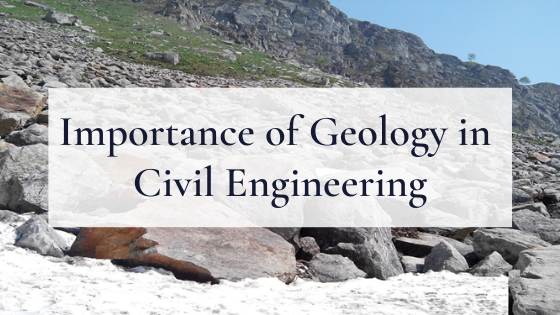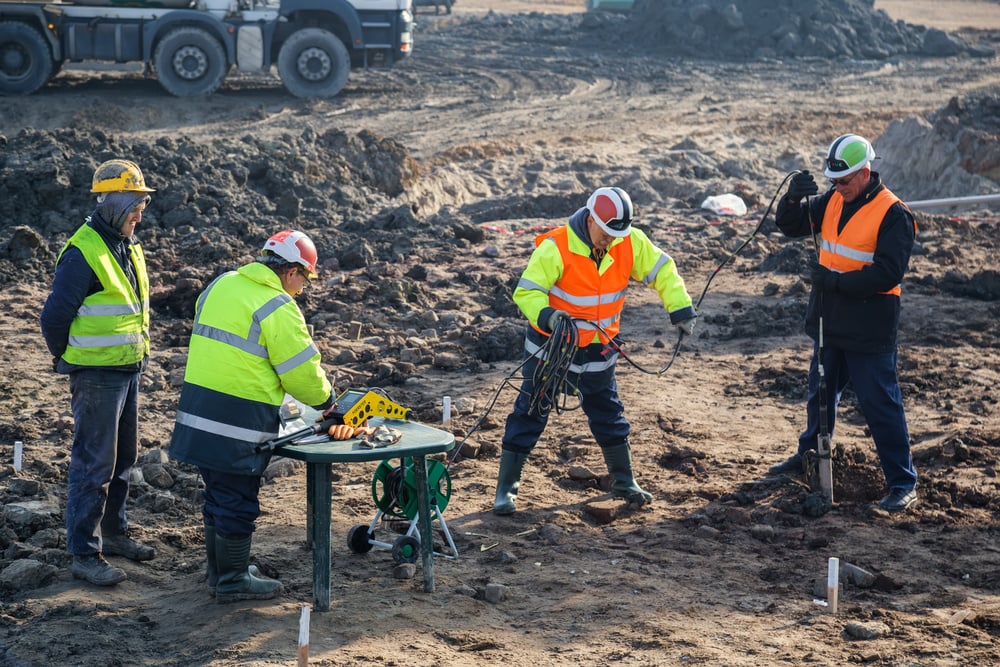The 5-Second Trick For Geotechnical Engineering For Construction Projects
Facts About Geotechnical Engineering For Construction Projects Uncovered
Table of Contents4 Simple Techniques For Geotechnical Engineering For Construction ProjectsGeotechnical Engineering For Construction Projects - The FactsAll About Geotechnical Engineering For Construction ProjectsA Biased View of Geotechnical Engineering For Construction ProjectsSome Known Details About Geotechnical Engineering For Construction Projects The smart Trick of Geotechnical Engineering For Construction Projects That Nobody is Discussing7 Easy Facts About Geotechnical Engineering For Construction Projects Shown
and Kovacs, W. (1981 ), An Intro to Geotechnical Engineering, Prentice-Hall, Inc. Deep Check Tech (2023 ): Deep Check Tech discovers surprise structures at the site of Denmark's tallest building. "Geofrost Coring". GEOFROST. Obtained 20 November 2020. Han, Jie (2015 ). Concepts and Method of Ground Enhancement. Wiley. ISBN 9781118421307. RAJU, V. R.Ground Improvement Technologies and Case Histories. Singapore: Research Study Publishing Solutions. p. 809. ISBN978-981-08-3124-0. Ground Improvement Principles And Applications In Asia. Pariseau, William G. (2011 ). Style evaluation in rock mechanics. CRC Press. Hegde, A.M. and Palsule P (Geotechnical Engineering for Construction Projects).S. (2020 ), Performance of Geosynthetics Reinforced Subgrade Subjected to Repeated Vehicle Loads: Speculative and Numerical Research Studies.
Cengage Learning, Stamford, 666 p. Atkinson, J., 2007. The auto mechanics of soils and foundations. Taylor & Francis, N.Y., 442 p. Drifting Offshore Wind Turbines: Feedbacks in a Sea state Pareto Optimal Designs and Financial Assessment, P. Sclavounos et al., October 2007. Nicholson, D, Tse, C and Cent, C. (1999 ). The Observational Technique in ground design principles and applications.
The Of Geotechnical Engineering For Construction Projects
Lab and field screening plays a critical duty in this procedure. By drawing out examples from the earth's subsurface and applying a collection of examinations, geotechnical designers can predict the practices of soil layers and evaluate their suitability for numerous building efforts. The essence of geotechnical design in civil engineering can not be overemphasized, attributable to several variables: The initial action in any geotechnical research includes identifying the dirt type at the construction website.
The foundation acts as the bedrock of any building and construction job. Selecting the suitable foundation kind is a choice that pivots on the comprehensive analysis offered by geotechnical engineering.

Geotechnical site examination is an important step in the planning and execution of any kind of construction project. It entails the collection and analysis of information connected to the physical properties of soil and rock below a recommended construction site. This info is important for the design and building and construction of secure, secure, and sustainable frameworks.
What Does Geotechnical Engineering For Construction Projects Do?
, likewise known as subsurface expedition, entails a collection of activities intended at identifying the dirt, rock, and groundwater conditions at a building and construction website. The primary goals are to identify prospective geotechnical dangers, assess the engineering residential or commercial properties of subsurface products, and provide suggestions for the layout and building and construction of foundations, retaining wall surfaces, and other frameworks.
This may consist of geological maps, aerial photographs, previous investigation reports, and historic data. The workdesk research helps in determining possible geotechnical issues and preparing the succeeding fieldwork. Following the workdesk study, a website reconnaissance is conducted to aesthetically evaluate the site and its environments. This includes observing the topography, drainage patterns, existing structures, plant life, and any type of indications of instability or disintegration.
Some Known Facts About Geotechnical Engineering For Construction Projects.
Shallow test pits are dug deep into to directly observe and example the soil and rock. This technique serves for studying the upper layers of the subsurface and determining near-surface threats. Non-invasive geophysical approaches, such as seismic refraction, ground-penetrating radar (GPR), and electrical resistivity tomography (ERT), are made use of to map subsurface problems and discover abnormalities.
Soil and rock samples collected throughout the field investigation are subjected to research laboratory screening to establish their physical and mechanical residential or commercial properties. These examinations provide important data for geotechnical analysis and style.
The key benefit of geotechnical site examination is ensuring the safety and security and security of structures. By recognizing the subsurface conditions, designers can make structures and other structural aspects that can hold up against the loads and environmental forces they will undergo. This decreases the threat of negotiation, subsidence, and structural failure.
Things about Geotechnical Engineering For Construction Projects
Recognizing dirt attributes can lead the option of excavation techniques, dewatering methods, and ground renovation procedures. This makes certain efficient and safe construction techniques. Geotechnical site examinations are usually needed by building codes and guidelines. Following these needs makes certain conformity with legal and safety criteria, avoiding prospective lawful responsibilities and project delays.
This information is very useful for job supervisors, engineers, and contractors in creating practical schedules, budgets, and contingency plans. Geotechnical Engineering for Construction Projects. High-Rise Building in a Coastal AreaIn a seaside city, a skyscraper residential building was intended on a website with thought loosened sand deposits and a high water table. A click site comprehensive geotechnical examination, including borehole exploration, CPT, and geophysical surveys, was performed
7 Easy Facts About Geotechnical Engineering For Construction Projects Explained
Based on these searchings for, the foundation design was modified to include deep pile foundations prolonging into stable strata, and ground improvement techniques, such as vibro-compaction, were executed to reduce liquefaction dangers. This positive technique made sure the safety you can look here and security and security of the building while avoiding pricey post-construction removal. Facilities Development on a Sloping TerrainA major infrastructure job, entailing the construction of a freeway and bridges, was prepared on a hilly surface with steep inclines.

The Leaning Tower of Pisa (Italy), an iconic building wonder, is well known for its unintentional tilt from substantial geotechnical concerns. The tower's foundation was inadequately designed to handle the soft, unsteady dirt beneath it, bring about unequal settlement and its distinct lean. Our world is dotted with excellent infrastructure projectsfrom towering high-rises to stretching bridgesall standing testimony to the advancement of the different construction tools and techniques readily available.
Geotechnical design is a specialized area within civil engineering that focuses on examining the behavior of planet materials. This branch dives deep right into the groundinvestigating just how the soil, rock, and groundwater at a building site can influenceand be influenced bythe facilities that we erect on and right into them. Before a solitary block is laid or a concrete directory foundation poured, geotechnical designers probe into the earthgathering essential data concerning the website's dirt make-up, rock framework, and groundwater degrees.
Unknown Facts About Geotechnical Engineering For Construction Projects

is a device made use of to analyze the stability and load-bearing capability of stacks during installment, leveraging the principle of wave breeding. It enhances building performance by giving real-time evaluations, thus guaranteeing safe and effective stack foundations. Among the sensible applications of geotechnical design involves determining and performing the appropriate techniques for structure building and construction.
Pile driving represents even more than the mere act of putting architectural aspects into the ground. As a matter of fact, it is a meticulously coordinated process of moving a framework's lots past the much less secure dirt layers closer to the surfacedown to the more significant strata that exist beneath. In the case of pile driving, consider how geotechnical engineers expertly use this technique to evenly distribute the structure's weight.